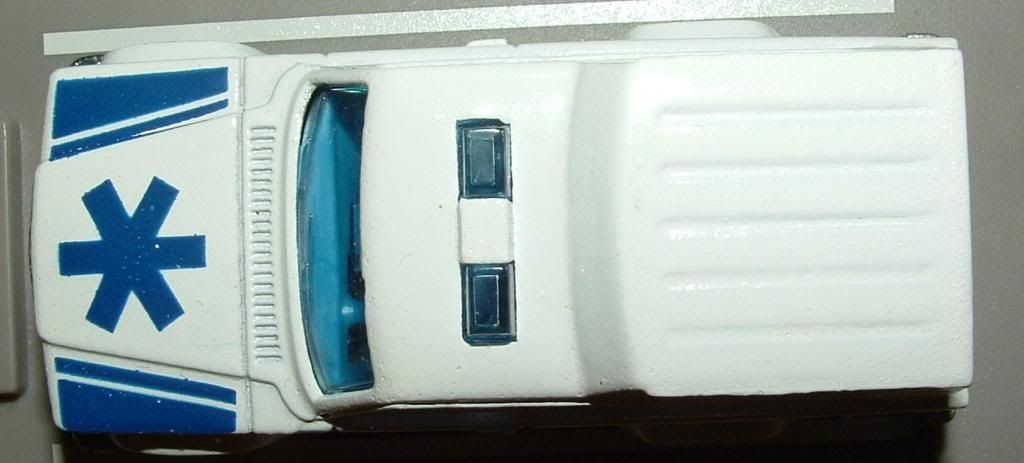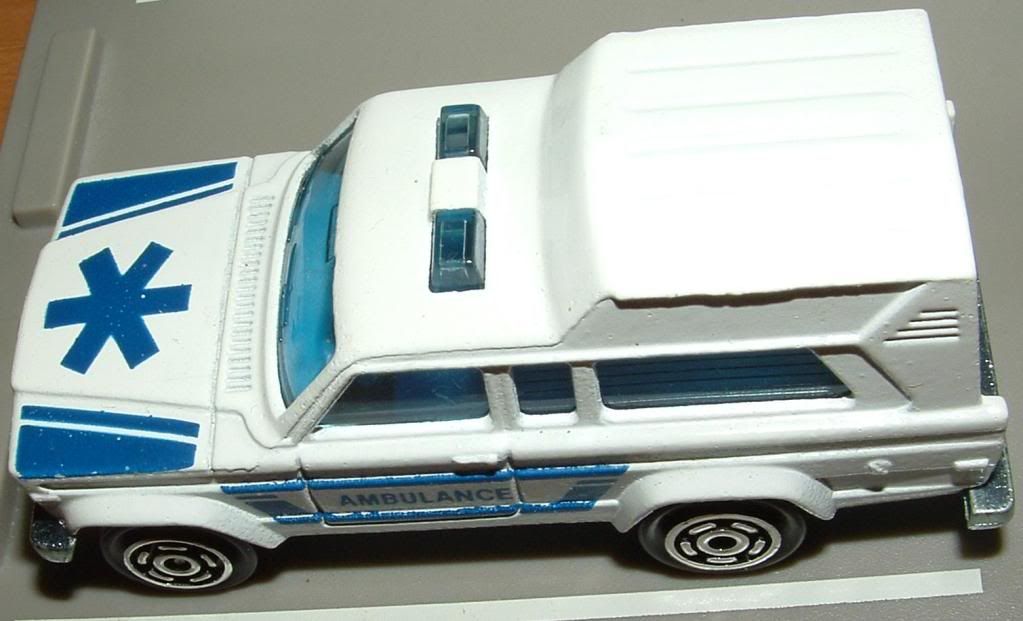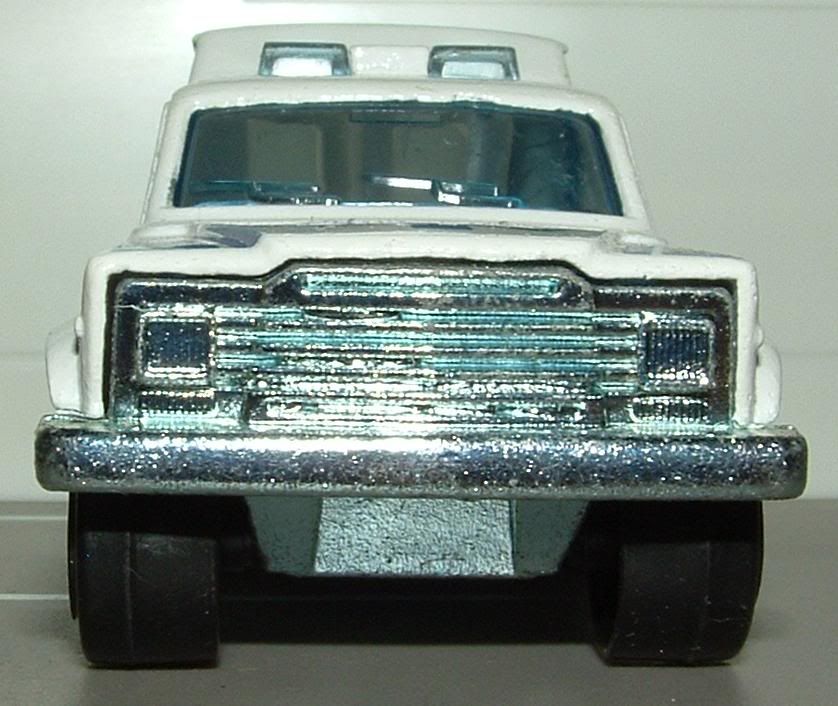
A blog focusing on 1/64 diecast from such popular brands as Hot Wheels, Matchbox, Johnny Lightning, M2 Machines, GreenLight, Tomica, Yat Ming, Majorette, MotorMax, Siku, Corgi, Guisval, Playart, Ertl, Zylmex, Racing Champions, & many more. Swifty's Garage features a daily Car Of The Day and news updates from your favorite brands!
Saturday, March 19, 2011
Ambulance Of The Day: March 19, 2011
Today's car of the day is Majorette's 1979 Jeep Cherokee Ambulance.
The SJ series Jeep Cherokee was a full-size SUV produced from 1974 through 1983 by the Jeep division of the American Motors Corporation (AMC). It was similar to the Wagoneer that was originally designed by Brooks Stevens in 1963.
For more information and pictures of the real car please visit: Jeep Cherokee
Not many Cherokees/Wagoneers were pressed into ambulance duty, though a quick Google search reveals at least two different ones. Neither of which looks like this one (which resembles a Cadilla based ambulance) whereas the ones I've found pictures of are box ambulances.
The Cherokee was a redesigned reintroduction of a two door body style, with a single fixed rear side window with an optional flip-out section. Previously, a two door version had been available in the Jeep Wagoneer line (1963–67), although this had the same pillar and window configuration as the four-door Wagoneer.
Based on the Wagoneer, the Cherokee was marketed as the "sporty" two-door variant of Jeep's station wagon. The term "Sport Utility" appears for the first time in the 1974 Cherokee sales brochure. A four-door was not added to the lineup until 1977. Other than the base model, the trim levels of the Cherokee included the S (Sport), Chief, Golden Eagle, Limited, Classic, Sport, Pioneer, and Laredo.
Engine choices consisted of AMC I6 or V8 powerplants. When it was equipped with the powerful 401 cu in (6.6 L) AMC V8 engine, it would out-run just about any other 4x4 in its class, and, with 3.07:1 highway gearing, could reach speeds in excess of 100-mile-per-hour (161 km/h) (early models had 120 mph speedometers). A range of AMC engines were offered: the 258 cu in (4.2 L) inline six-cylinder, a 360 cu in (5.9 L) V8 with two-barrel carburetor, a four-barrel 360, or the 401 cu in (6.6 L) V8. The durable 401 had a forged crankshaft and forged connecting rods, as well as the high nickel content block of the other AMC V8s. The 401 was discontinued at the end of 1978. After acquiring AMC in 1987, Chrysler kept the 360 V8 in production until 1991 for the Jeep Grand Wagoneer.
A T-18/T-18a four speed manual gearbox was standard for all years, while through 1979 the General Motors' Turbo-Hydramatic TH400, more commonly fitted to 3/4- and 1-ton trucks rather than SUVs, was optional. For comparison, the Chevy Blazer used the TH350 automatic. After 1979, the TH400 was replaced by the Chrysler's TorqueFlite 727.
A gear-driven Dana 20 transfer case with 2.03:1 low range was standard with the manual gearbox (which had a much lower first gear of about 6.3:1), while the TH400 automatics received the permanent four-wheel drive QuadraTrac system. The chain-driven, aluminum QuadraTrac was quite advanced at the time. It included a vacuum operated center differential lock. The transfer case was offset, allowing it to sit just above the frame to avoid obstacles, and the chain itself is larger than nearly any other. A test by the Four-Wheel Drive Book found that the Cherokee was the only vehicle unable to be dynoed because the transfer case would not allow the rear wheels to spin, unlike the other full-time four-wheel drive vehicles being tested. In the off-road test, the same held true. This transfer case was also employed successfully in Baja races, for example by Roger Mears in the Baja 1000. A 2.57:1 low range was optional on QuadraTrac.
In 1975, the Cherokee Chief package was introduced. Aside from trim changes, this model received larger fenders and wider axles, allowing larger tires to be fitted to further improve off-road ability. Four-door models were not available with "wide-track" axles.
Dana 44 model axles were used both in the front and the rear at least through 1979. Brake hardware was mostly General Motors equipment, with disc brakes up front (optional on earlier models) and drum brakes in the rear.
All Cherokees had semi-elliptical leaf springs in the front and rear.
Subscribe to:
Post Comments (Atom)








No comments:
Post a Comment